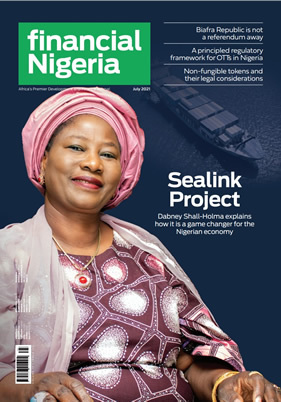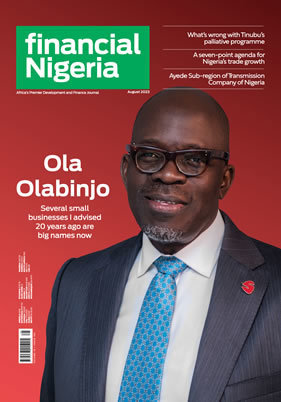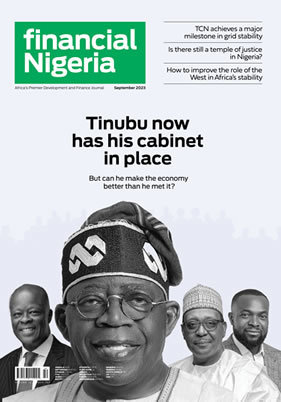
Akachi Ngwu, Author, Entrepreneur
Subjects of Interest
- Communications
- Entreprenuership
- Public Relations
Emerging forms of marketing communication 28 Jul 2017
Advertising and marketing communication have continued to evolve, especially with advancements in mobile and social technology. With the proliferation of social media platforms, the nature of content consumption is shifting from television, radio and print to digital. Businesses and brands are, therefore, able to leverage the power of social networking platforms to engage and build loyalty with their customers. This has resulted in new forms of marketing, which are defined by dialogue between the sellers and buyers.
Businesses are spending more on advertising. MAGNA, a New York-based media agency, said global spend on advertising in 2016 increased to nearly $500 billion. eMarketer forecasts that brands will spend $34 billion on Facebook alone in 2017.
Despite the rise in advertising spend, advertising is delivering far less salutary experience. For instance, according to Forrester, an American market research company, 38 per cent of U.S. adults using the internet have installed an ad blocker. The proportion of the American online population that claims to actively avoid ads on websites is 50 per cent. A study by IAB/YouGov on the state of ad blocking in the U.K. shows that 47 per cent of online consumers use ad blockers.
Indeed, ad avoidance is also a growing concern. It is quite common for people to move away from watching the television, or change TV channels or radio stations when an advert is being aired.
As the rate of ad blocking increases and patterns of content consumption change, big businesses, most especially, are becoming concerned about the effectiveness of their marketing campaign messages. Old one-way marketing strategies are no longer effective at a time when collaborative marketing has been made possible. Businesses that must remain competitive are evolving new strategies and developing advertising campaigns that are quite compelling and attention-grabbing. Some strategies employed by advertisers to reach consumers include influencer marketing, branded content marketing, conversation marketing, among others.
Influencer marketing
Influencers, in social media parlance, are individuals who have mammoth following across Facebook, Twitter, LinkedIn, Instagram, Snapchat and other internet blogs. Such individuals could be celebrities, thought leaders or popular bloggers. Although influencer marketing used to be more prevalent in the fashion, sports and entertainment industries, its rate of adoption across other market segments has increased significantly.
A survey by Schlesinger Associates showed that 84 per cent of marketers planned to execute at least one influencer marketing campaign in 2017. A relevant influencer to an industry exposes a brand to the right consumers. Influencers already have a personal brand and they are able to leverage it to provide the target exposure for brands to their audience whose attention they already have. A Forbes contributor, AJ Agrawal, wrote: "The best influencers work to integrate their branded campaigns into their unique stories without skipping a beat."
Soccer superstar, Cristiano Rolando, considered as one of the world's top influencers, leverages his social media following to drive tremendous value for his sponsors. An influencer and brand ambassador for Nike, Ronaldo reportedly generated $500 million for Nike in media value through his posts last year, according to Hookit, a company that measures the social and digital media value for brands.
Branded content marketing
Branded content is a form of advertising designed to engage the consumer. As a subset of content marketing, the content generated does not explicitly promote a particular brand but it aims to stimulate interest in the products and services of the brand. Where the advertisement of the brand could have been avoided or blocked by potential consumers, an interesting event, video or editorial piece is used to get the attention of the same consumers.
Branded contents can elicit online comments from brand users and potential users. The generated comments will enable brand owners to build strong brand equity. Financial services companies and technology start-ups are increasingly deploying branded content marketing in both online and offline platforms. Bloggers and publishers are partnering with these brands to develop and deploy branded content marketing campaigns. Financial Nigeria has attracted Nigerian banks and fintech organisations to deliver branded content marketing in its print and online publications.
Conversation marketing
Ian Lurie, author of Conversation Marketing: Common Sense Internet Strategies, said: "Conversation Marketing ensures that you know your audience, target them with an appropriate message, and then observe their response and adjust that message accordingly. It can do this because of the two-way nature of the internet."
Because of media fragmentation, the typical 21st century consumer has a limited attention span. Therefore, brand owners and their media agencies have found the need to create effective advertising messages that can grab the consumer's attention. Some brands have created online chat forums to engage their customers on issues pertaining to their brands and execute call-to-action.
In 2016, Twitter introduced conversational ads, which make it even easier for consumers to engage with and also spread a brand's campaign message. When a call-to-action button is tapped, a pre-composed tweet with a brand message pops up. Users who want to tweet it can then personalise the message before sharing it with their followers. Another example of conversational marketing is Heineken's new Open Your World Campaign, which is designed to bridge political divides between individuals over a bottle of beer.
Brands are also using collaborative marketing strategies to improve their products and continually engage with their consumers. In an article, "Customers Don't Want Ads, They Want a Conversation," published in Fast Company, CEO and Founder of Crowdtap, Brandon Evans, said "The collaborative marketing future has arrived, and it's going to be a fun ride." Both the brand owners and consumers are the winners in the evolving trends that will underpin marketing communication.
Akachi Ngwu is the Founder/CEO of Consumer Scores International Limited, a Lagos-based in–store advertising solutions provider. He is an alumnus of the Business Leadership Programme of Leap Africa. Email: akachi.ngwu@csinichead-ng.com
Latest Blogs By Akachi Ngwu
- Rising competition and sponsorship trends in Nigerian beer market
- What recent celebrity endorsements in Nigeria mean
- Sponsorships as effective brand communication tool for SMEs
- How design thinking drives brand marketing and engagement
- Utilising storytelling for effective marketing communication






